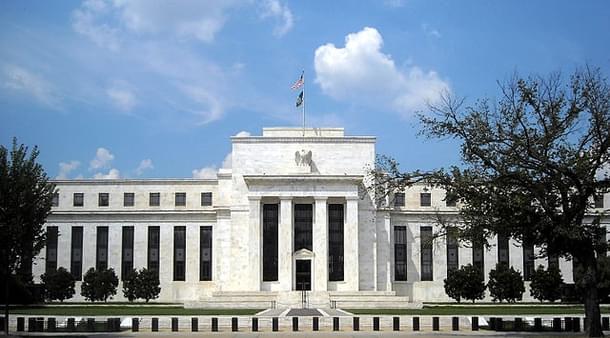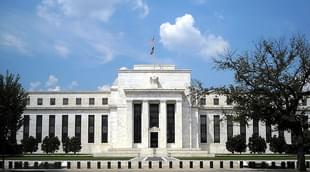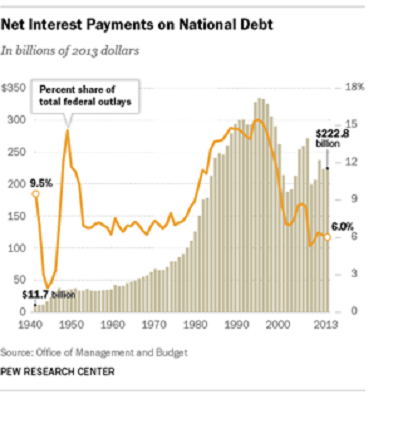World
Fed Rate Hike: Who's Yellen Trying To Fool When US May Well Be Into A Recession
Shanmuganathan Nagasundaram
Dec 17, 2015, 10:28 PM | Updated Feb 12, 2016, 05:34 PM IST
Save & read from anywhere!
Bookmark stories for easy access on any device or the Swarajya app.


Some economists have opined that the US economy might already be in a recession and so the rate hike was the last thing that the US economy needed right now.
In what history will judge as an extraordinary period, for the last 84 months the US Federal Reserve has held onto a policy of ZIRP (zero interest rate policy) and it’s almost a decade since the last rate hike happened in 2006. In other words, we have been on an easing cycle for almost a decade, though technically the withdrawal of QE (quantitative easing) could be seen as a tightening move – at least in the relative sense of the word.
The consensus in the markets favours a 100 bps (i.e, 1 percent) hike for each of the next couple of years. Some economists have, however, pointed out that the US economy might already be in a recession and so the rate hike was the last thing that the US economy needed right now. And that the Fed would be forced to embark on an easing cycle soon. So how does all this really play out?
I will start with the issue of whether the US Fed was right in hiking rates. Unquestionably, “Yes”. Not because the labour market/GDP growth conditions are expected to improve, as Fed Chair Janet Yellen speculated, but because decades of loose monetary policies have led to a gigantic debt bubble and any further easing would essentially have been “pushing a string” – i.e. incurring all of the costs with none of the benefits accruing to the real economy. That in fact might as well be the story for the previous decade.
In fact, Janet Yellen had to abandon her “incoming data dependent” approach to effect the hike yesterday (16 December). For much of the year, she had insisted on seeing an improvement in the “labour force participation rate” before she embarked on a hiking cycle. But just a fortnight back, she had changed her tune to speculate that it might automatically improve in the months ahead despite a hike. Why the sudden shift?
Maybe Yellen is well aware that the US economy is already in a recession as almost all of the leading indicators (factory orders, thanksgiving sales, inventory data, etc) show and it’s only a matter of time before she has to embark on an easing cycle. So it might well have boiled down to choosing between making obvious to the world that the US is a “QE only economy” or giving the world a reasonable sounding excuse about the interest rate hike being the cause of the recession, even if it happens to inflict a certain amount of self-damage to her reputation as a forecaster (not that the public has any memory of the forecasting track records of these central bankers. Yellen’s forecasting on the housing bubble or the 2008 credit crisis was abysmal, though President Obama credited her for the same when she took office).
Yellen might simply have opted for the lesser of two evils.
What Next?
As students of the Austrian School of Economics would know, the manipulation of interest rates by central banks is what causes business cycles. The current easy credit cycle has gone on for a 35-year period wherein US interest rates have come down from around 20 percent plus in 1980 to just above “0 percent” now. It’s been such a long and nearly uninterrupted run in the bond markets that the youngest successful bond bear would have to be 60+ today.
This long period of easy credit has led to tremendous malinvestments and capital misallocation decisions worldwide – most notably on the side of government finances, leading to bloated balance sheets. The US national debt, which was less than $1 trillion in 1980, has now jumped to more than $18 trillion. But why has this 18-fold jump in debt not had any consequences for the US economy?
While many might suspect a corresponding increase in GDP as the reason, the truth lies elsewhere. The GDP did indeed grow from nearly $3 trillion in 1980 to over $18 trillion today. But that’s just a third of the growth in national debt. The real answer lies in the magic of falling interest rates. Despite an 18-fold jump in debt, the net interest payment today is not very different from what it was during the 1980s and a percentage of total outlays; it is, in fact, at the lowest levels in more than 60 years.

Therein lies the reason as to why the US cannot sustain any meaningful increase in interest rates. At a mere 4 percent interest rate, the share of net interest payments in federal outlays would jump to more than 20 percent – a clearly unsustainable level.
What does it imply?
I think the US economy is on the path of what Ludwig von Mises describes as the “Crack Up Boom” – i.e. destruction of the currency. There might be technically no way out of the situation today although, much like a near-dead patient can stay on ventilator support, the US economy can totter along under conditions of A-ZIRP (Almost ZIRP).
Despite a quadrupling of the US Fed balance-sheet since the 2008 crisis, the US economy has had relatively low levels of inflation due to a steep fall in money velocity. But this is a temporary and psychological factor and it may not take much to push this back to normal levels. Though hard to predict as to when this would happen, it’s even harder to fathom the misplaced confidence in the US dollar to continue for an extended period of time.
As far as Yellen is concerned, she will continue to give speeches about normalising monetary policy for a few more weeks. That there is no way for the Fed to shrink its balance-sheet will never be brought up (who is there to buy the trillions of near junk bonds it holds?) Perhaps by the end of Q1 of 2016, it would be obvious to everybody that the US is indeed in a deep recession. And Yellen would be forced to come out with interest rate rollbacks and loaded helicopters to fill the economy with free cash.
Shanmuganathan N (aka Shan) is an Economist based in India. He is the author of the recently published book "RIP U$D: 1971-202X …and the Way Forward" and can be contacted at shan@plus43capital.com




